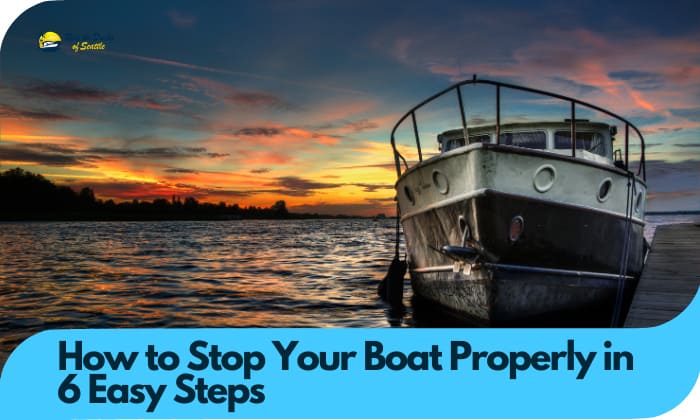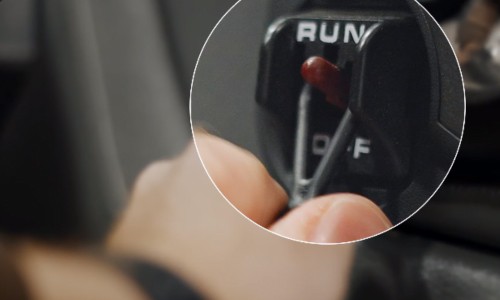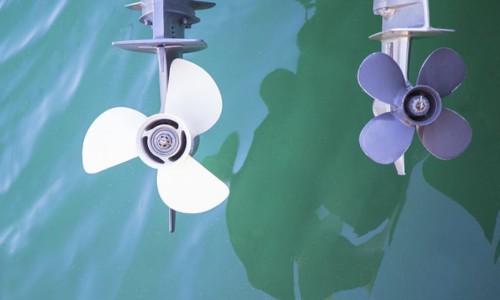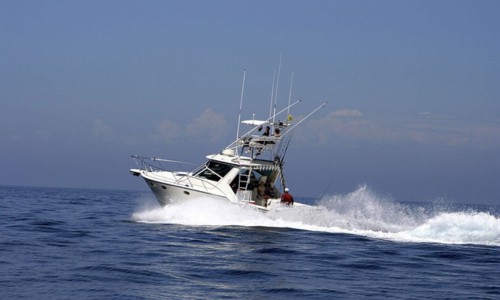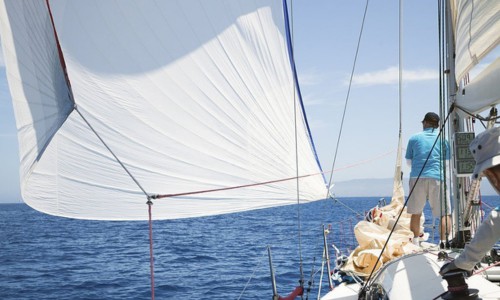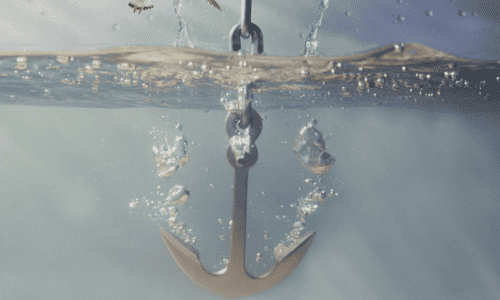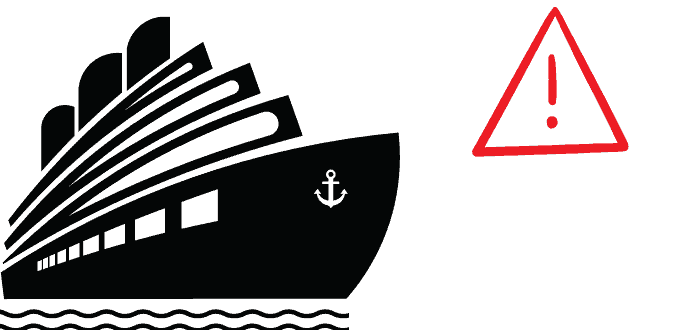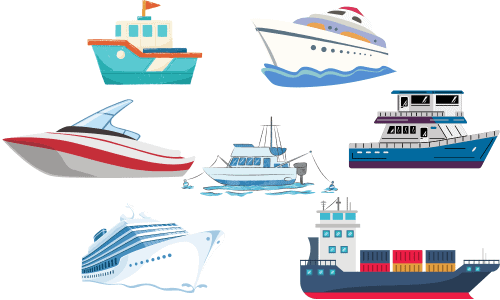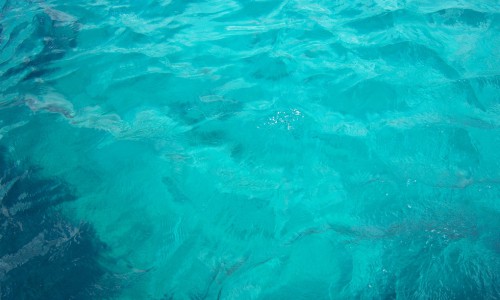Folks who hear others ask about how to stop your boat often think the question is absurd. However, we believe it’s a valid concern. After all, collisions and accidents happen in bodies of water. Knowing how to stop a vessel is crucial to ensuring safety.
Stopping a boat would depend on the watercraft type, including available “braking” mechanisms. Regardless, most boaters reverse the thrust to reduce vessel speed, allowing them to stop the boat. Others would drop their anchors, while some would deploy other components to increase drag.
There’s more to stopping boats than anchoring and thrust reversal actions. And if you want to learn every sailor’s secrets to stopping a watercraft, you’ll want to continue reading.
Table of Contents
Techniques for Stopping a Boat
Let’s answer a concern related to our topic – “Do boats have brake systems?”
Unfortunately, watercraft don’t have calipers and discs (or drums) to stop the wheels from spinning. Boats don’t even have wheels, and they don’t run on solid ground (roads).
When we apply the brakes on our cars, the brake system prevents the wheels from rotating. It increases friction on the road and forces the vehicle to stop. Boats don’t have a solid surface to create friction with. It only has liquid.
Since boats do not have brakes, what is the best way to bring your boat to a stop? Good question! And you can accomplish this by adhering to the following techniques.
1. Switch Off the Engine
Sailors call this maneuver “inertia stop,” requiring the operator to stop the vessel’s engine. The loss of forward power puts the watercraft at the mercy of the water, increasing drag, and slowing the boat.
Although effective, cutting off power to the engine will not stop the watercraft in its current location. For example, warships drift a tenth of their speed before stopping, while tankers can continue moving on the water for about half the speed.
2. Reverse the Propeller’s Spin Direction
Inertia stop only slows down the vessel, making it drift some distance. So, how do boats stop faster?
Most watercraft propellers spin clockwise to move forward, while others (left-hand screws) rotate counterclockwise. Changing the propeller’s rotational direction will help stop the boat faster and drift over shorter distances than the inertia stop method.
Please exercise caution when performing this technique. Changing the propeller’s rotational direction from forward to reverse can damage the propeller gears and increase the risk of loss of boat control because of the sudden shift in screw rotation.
Experts recommend shifting the gear to Neutral for a second or two before engaging it to Reverse. Although this action will only slow down a boat, the vessel will still stop sooner than powering off the engine.
3. Steer the Watercraft Sideways
This method works by putting the engine in reverse. Turning the vessel sideways helps reduce inertia, allowing the watercraft to stop faster.
It’s worth noting that boats have a “slim” profile when we view them from the bow or stern. This design allows vessels to move on the water faster because of minimal drag.
Turning the boat sideways increases the surface area in contact with the oncoming water. It increases drag (or friction), allowing the vessel to stop sooner.
4. Use the Jet Boat’s Reverse Bucket
Personal watercraft (PWCs), like Jet Skis and Jet boats, use powerful water jet streams to propel the vessel. Most jet-powered boats have reverse buckets to shoot the water jet stream in the other or opposite direction.
It’s like putting the engine in reverse (i.e., spinning the propellers in the opposite direction), except that jet boats don’t have screws.
5. Manage the Sail Effectively
You can modify the mainsail’s direction relative to the wind to slow down a sailboat. Most sailors sail into the wind before repositioning the mainsail to one side. This maneuver causes the sailboat to reduce speed.
Alternatively, you can learn how to feather the sailboat by turning the bow side to side faster than normal. This action causes the vessel to lose momentum.
6. Drop the Anchor
We’ve seen Hollywood films perform this trick to stop ships. However, experts say boaters should drop the boat anchor only as a last resort.
Emergency Boat Stopping Procedures
Seasoned sailors call the emergency vessel stopping technique “crash maneuvering.” The procedure is quite simple in small watercraft like boats.
- Turn the boat’s steering wheel sideways to avoid colliding with an obstacle or another vessel. This technique only works if you’re going at least 100 MPH or 87 knots.
- Shift the gear to Neutral and wait a second or two before engaging it in Reverse.
The following steps show that emergency stops in large ships are more complicated.
- The navigation officer on the bridge contacts the engine room and instructs the engine officer to perform a crash maneuver.
- The engine room acknowledges the astern order.
- An engine room crew reverses the starting air cam and adjusts the fuel level position to “zero.”
- The engine crew monitors the engine RPM as it drops below 40% of its maximum rating.
- The engine crew activates the brake air component, synchronized with the astern timing.
- Adjust the fuel lever to its lowest start setting once the engine RPM is near-zero.
Factors Affecting Boat Stopping
Different boat types and varying water conditions can impact vessel stopping. The following factors can determine how fast a watercraft will stop in the water.
1. Boat Types
- Inertia – Larger vessels have greater inertia than small boats, making them slower to stop.
- Hull shape – Boats with streamlined hulls are slower to stop than vessels with full-formed hulls.
- Propulsion power – Boats with medium- to high-speed diesel engines and electric motors are quicker to stop than low-speed diesel and steam turbines.
- Propeller design – Some props require reversing the rotational direction, while others don’t.
- Hull bottom state – A boat with barnacles and other fouling organisms on the hull will stop faster than a clean-hulled vessel because of increased drag.
2. Water Conditions
Sailing in rough seas will be quicker to stop, although controlling and keeping the boat stable will be challenging. Strong waves and wind can produce drag effects on the ship, allowing it to stop sooner than average.
3. Safety Measures for Boat Stopping
Stopping a boat to avoid collisions doesn’t always go to plan. Hence, boaters must observe safety precautions at all times.
4. Potential Challenges
- Changing the boat’s direction to go astern might damage the vessel. Boaters must observe the one-second rule in Neutral before shifting to reverse.
- Steering the watercraft sideways might cause a loss of control because of a sudden shift. Maintain speed before turning and decelerate after the turn.
- Passengers might fall off the boat with sudden changes in the boat’s direction. Everyone must wear PFDs and hold onto sturdy structures.
5. Safety Gear Preparation
- Every boat passenger must wear a USCG-approved PFD to stay afloat if they fall off the water.
- Vessels must have USCG-approved fire extinguishers to manage engine fires due to improper crash maneuver procedures.
- Boaters must be ready with throwable flotation devices to help people who fell in the water get back onboard.
Conclusion
You can learn how to stop your boat by mastering the art of quickly turning the watercraft to avoid collisions and slow down the vessel. Learning the technique of going astern (reversing the propeller’s rotational direction) also facilitates loss of momentum.
Other methods include turning off the engine, managing the sail, and activating the jet boat’s reverse bucket. If all else fails, you can drop the anchor. These techniques should slow down the watercraft until it comes to a complete stop.

I am passionate about water sports and technical fields, so combining both makes me interested in making contents about boat accessories. With my partner, we went on many trips and sports games together, which led us to think about how we can spread our joys and passions to many people.

